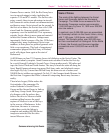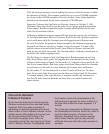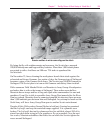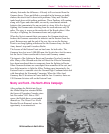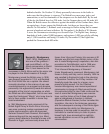
138
Close Combat
April, 51 divisions from Italy, Rumania, Hungary, Slovakia, and Spain arrive on
the Eastern Front.
In preparation for the summer offensive, the Germans reorganize their forces in
the south. Army Group South is divided into Army Groups A and B. Army Group
A is to capture Rostov-on-Don, and drive southeast to Baku on the Caspian Sea.
The prize: oil fields that can supply most of Germany’s petroleum needs. Army
Group B is to protect Army Group A’s flank.
The offensive begins in early July. Initial success leads Hitler to change the plan
on July 13; Army Group B’s objective is now to capture Stalingrad. Hitler again
meddles in the offensive on July 17, shifting Panzer units to Army Group A.
The Germans push steadily toward Stalingrad; they are within 16 miles of the city
by the end of August. By mid-September, the Germans establish a 30-mile front
surrounding the city. But there is a change in command for the Soviets; General
Vasili Chuikov takes command of the 62nd Army and orders a close-quarters style
of fighting that stymies the Germans. Chuikov’s character is also a plus; he is firm
and abrasive, but he exudes confidence that the Red Army will prevail. There is a
change in the German command as well: on September 9, Hitler takes personal
command of Army Group A.
On October 4, the Germans begin what they hope is the final drive on Stalingrad.
The Luftwaffe flies thousands of sorties, dive bombing and strafing targets
throughout the city. The Soviets counter by luring many advancing German units
into prearranged killing zones, where they are decimated by automatic weapons,
mortar, tank, and artillery fire. By October 18, the Red Army has fought the
Germans to a standstill, and they have done so with a minimum commitment of
reinforcements; they are hoarding resources for a counterattack at Stalingrad.
German intelligence reports a buildup of Soviet units north of Stalingrad; General
Friedrich Paulus, commander of the German Sixth Army, orders what turns out to
be the final German attack on the port city of Stalingrad. Over the next six days
Stalingrad reverberates with the sounds of fighting. Casualties are heavy on both
sides. The Soviets are able to splinter the German attacks; some units make slow
and costly progress but most are stopped cold. A few units push to the River
Volga. But the Germans cannot maintain central control over their advancing
infantry and the battle degenerates into a series of unconnected firefights. The Red
Army’s small-unit, close-quarter tactics prevail.
The Axis Cracks
The German Defeat At Stalingrad
By November 1942, the German Army is badly overextended and its troops are
exhausted. Every available German soldier has been thrown into the killing
cauldron at Stalingrad. The Soviet counterattack calls for a pincer movement; one
force attacking from the north and another attacking from the south.




